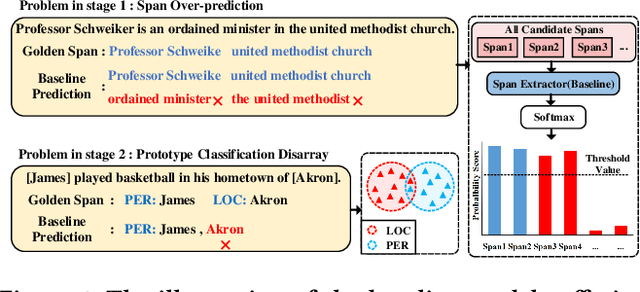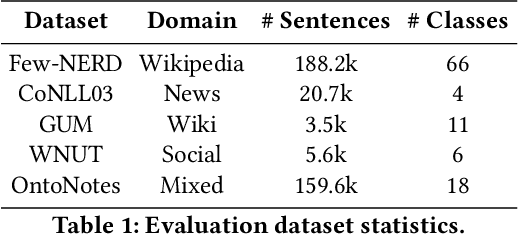Dayuan Fu
DeepResearcher: Scaling Deep Research via Reinforcement Learning in Real-world Environments
Apr 07, 2025Abstract:Large Language Models (LLMs) equipped with web search capabilities have demonstrated impressive potential for deep research tasks. However, current approaches predominantly rely on either manually engineered prompts (prompt engineering-based) with brittle performance or reinforcement learning within controlled Retrieval-Augmented Generation (RAG) environments (RAG-based) that fail to capture the complexities of real-world interaction. In this paper, we introduce DeepResearcher, the first comprehensive framework for end-to-end training of LLM-based deep research agents through scaling reinforcement learning (RL) in real-world environments with authentic web search interactions. Unlike RAG-based approaches that assume all necessary information exists within a fixed corpus, our method trains agents to navigate the noisy, unstructured, and dynamic nature of the open web. We implement a specialized multi-agent architecture where browsing agents extract relevant information from various webpage structures and overcoming significant technical challenges. Extensive experiments on open-domain research tasks demonstrate that DeepResearcher achieves substantial improvements of up to 28.9 points over prompt engineering-based baselines and up to 7.2 points over RAG-based RL agents. Our qualitative analysis reveals emergent cognitive behaviors from end-to-end RL training, including the ability to formulate plans, cross-validate information from multiple sources, engage in self-reflection to redirect research, and maintain honesty when unable to find definitive answers. Our results highlight that end-to-end training in real-world web environments is not merely an implementation detail but a fundamental requirement for developing robust research capabilities aligned with real-world applications. We release DeepResearcher at https://github.com/GAIR-NLP/DeepResearcher.
AgentRefine: Enhancing Agent Generalization through Refinement Tuning
Jan 03, 2025Abstract:Large Language Model (LLM) based agents have proved their ability to perform complex tasks like humans. However, there is still a large gap between open-sourced LLMs and commercial models like the GPT series. In this paper, we focus on improving the agent generalization capabilities of LLMs via instruction tuning. We first observe that the existing agent training corpus exhibits satisfactory results on held-in evaluation sets but fails to generalize to held-out sets. These agent-tuning works face severe formatting errors and are frequently stuck in the same mistake for a long while. We analyze that the poor generalization ability comes from overfitting to several manual agent environments and a lack of adaptation to new situations. They struggle with the wrong action steps and can not learn from the experience but just memorize existing observation-action relations. Inspired by the insight, we propose a novel AgentRefine framework for agent-tuning. The core idea is to enable the model to learn to correct its mistakes via observation in the trajectory. Specifically, we propose an agent synthesis framework to encompass a diverse array of environments and tasks and prompt a strong LLM to refine its error action according to the environment feedback. AgentRefine significantly outperforms state-of-the-art agent-tuning work in terms of generalization ability on diverse agent tasks. It also has better robustness facing perturbation and can generate diversified thought in inference. Our findings establish the correlation between agent generalization and self-refinement and provide a new paradigm for future research.
MSI-Agent: Incorporating Multi-Scale Insight into Embodied Agents for Superior Planning and Decision-Making
Sep 25, 2024Abstract:Long-term memory is significant for agents, in which insights play a crucial role. However, the emergence of irrelevant insight and the lack of general insight can greatly undermine the effectiveness of insight. To solve this problem, in this paper, we introduce Multi-Scale Insight Agent (MSI-Agent), an embodied agent designed to improve LLMs' planning and decision-making ability by summarizing and utilizing insight effectively across different scales. MSI achieves this through the experience selector, insight generator, and insight selector. Leveraging a three-part pipeline, MSI can generate task-specific and high-level insight, store it in a database, and then use relevant insight from it to aid in decision-making. Our experiments show that MSI outperforms another insight strategy when planning by GPT3.5. Moreover, We delve into the strategies for selecting seed experience and insight, aiming to provide LLM with more useful and relevant insight for better decision-making. Our observations also indicate that MSI exhibits better robustness when facing domain-shifting scenarios.
How Do Your Code LLMs Perform? Empowering Code Instruction Tuning with High-Quality Data
Sep 05, 2024Abstract:Recently, there has been a growing interest in studying how to construct better code instruction tuning data. However, we observe Code models trained with these datasets exhibit high performance on HumanEval but perform worse on other benchmarks such as LiveCodeBench. Upon further investigation, we find that many datasets suffer from severe data leakage. After cleaning up most of the leaked data, some well-known high-quality datasets perform poorly. This discovery reveals a new challenge: identifying which dataset genuinely qualify as high-quality code instruction data. To address this, we propose an efficient code data pruning strategy for selecting good samples. Our approach is based on three dimensions: instruction complexity, response quality, and instruction diversity. Based on our selected data, we present XCoder, a family of models finetuned from LLaMA3. Our experiments show XCoder achieves new state-of-the-art performance using fewer training data, which verify the effectiveness of our data strategy. Moreover, we perform a comprehensive analysis on the data composition and find existing code datasets have different characteristics according to their construction methods, which provide new insights for future code LLMs. Our models and dataset are released in https://github.com/banksy23/XCoder
CS-Bench: A Comprehensive Benchmark for Large Language Models towards Computer Science Mastery
Jun 12, 2024



Abstract:Computer Science (CS) stands as a testament to the intricacies of human intelligence, profoundly advancing the development of artificial intelligence and modern society. However, the current community of large language models (LLMs) overly focuses on benchmarks for analyzing specific foundational skills (e.g. mathematics and code generation), neglecting an all-round evaluation of the computer science field. To bridge this gap, we introduce CS-Bench, the first bilingual (Chinese-English) benchmark dedicated to evaluating the performance of LLMs in computer science. CS-Bench comprises approximately 5K meticulously curated test samples, covering 26 subfields across 4 key areas of computer science, encompassing various task forms and divisions of knowledge and reasoning. Utilizing CS-Bench, we conduct a comprehensive evaluation of over 30 mainstream LLMs, revealing the relationship between CS performance and model scales. We also quantitatively analyze the reasons for failures in existing LLMs and highlight directions for improvements, including knowledge supplementation and CS-specific reasoning. Further cross-capability experiments show a high correlation between LLMs' capabilities in computer science and their abilities in mathematics and coding. Moreover, expert LLMs specialized in mathematics and coding also demonstrate strong performances in several CS subfields. Looking ahead, we envision CS-Bench serving as a cornerstone for LLM applications in the CS field and paving new avenues in assessing LLMs' diverse reasoning capabilities. The CS-Bench data and evaluation code are available at https://github.com/csbench/csbench.
DivTOD: Unleashing the Power of LLMs for Diversifying Task-Oriented Dialogue Representations
Mar 31, 2024



Abstract:Language models pre-trained on general text have achieved impressive results in diverse fields. Yet, the distinct linguistic characteristics of task-oriented dialogues (TOD) compared to general text limit the practical utility of existing language models. Current task-oriented dialogue pre-training methods overlook the one-to-many property of conversations, where multiple responses can be appropriate given the same conversation context. In this paper, we propose a novel dialogue pre-training model called DivTOD, which collaborates with LLMs to learn diverse task-oriented dialogue representations. DivTOD guides LLMs in transferring diverse knowledge to smaller models while removing domain knowledge that contradicts task-oriented dialogues. Experiments show that our model outperforms strong TOD baselines on various downstream dialogue tasks and learns the intrinsic diversity of task-oriented dialogues.
On Large Language Models' Hallucination with Regard to Known Facts
Mar 29, 2024



Abstract:Large language models are successful in answering factoid questions but are also prone to hallucination.We investigate the phenomenon of LLMs possessing correct answer knowledge yet still hallucinating from the perspective of inference dynamics, an area not previously covered in studies on hallucinations.We are able to conduct this analysis via two key ideas.First, we identify the factual questions that query the same triplet knowledge but result in different answers. The difference between the model behaviors on the correct and incorrect outputs hence suggests the patterns when hallucinations happen. Second, to measure the pattern, we utilize mappings from the residual streams to vocabulary space. We reveal the different dynamics of the output token probabilities along the depths of layers between the correct and hallucinated cases. In hallucinated cases, the output token's information rarely demonstrates abrupt increases and consistent superiority in the later stages of the model. Leveraging the dynamic curve as a feature, we build a classifier capable of accurately detecting hallucinatory predictions with an 88\% success rate. Our study shed light on understanding the reasons for LLMs' hallucinations on their known facts, and more importantly, on accurately predicting when they are hallucinating.
BootTOD: Bootstrap Task-oriented Dialogue Representations by Aligning Diverse Responses
Mar 02, 2024Abstract:Pre-trained language models have been successful in many scenarios. However, their usefulness in task-oriented dialogues is limited due to the intrinsic linguistic differences between general text and task-oriented dialogues. Current task-oriented dialogue pre-training methods rely on a contrastive framework, which faces challenges such as selecting true positives and hard negatives, as well as lacking diversity. In this paper, we propose a novel dialogue pre-training model called BootTOD. It learns task-oriented dialogue representations via a self-bootstrapping framework. Unlike contrastive counterparts, BootTOD aligns context and context+response representations and dismisses the requirements of contrastive pairs. BootTOD also uses multiple appropriate response targets to model the intrinsic one-to-many diversity of human conversations. Experimental results show that BootTOD outperforms strong TOD baselines on diverse downstream dialogue tasks.
PreAct: Predicting Future in ReAct Enhances Agent's Planning Ability
Feb 18, 2024Abstract:Addressing the discrepancies between predictions and actual outcomes often aids individuals in expanding their thought processes and engaging in reflection, thereby facilitating reasoning in the correct direction. In this paper, we introduce $\textbf{PreAct}$, an agent framework that integrates $\textbf{pre}$diction with $\textbf{rea}$soning and $\textbf{act}$ion. Leveraging the information provided by predictions, a large language model (LLM) based agent can offer more diversified and strategically oriented reasoning, which in turn leads to more effective actions that help the agent complete complex tasks. Our experiments demonstrate that PreAct outperforms the ReAct approach in accomplishing complex tasks and that PreAct can be co-enhanced when combined with Reflexion methods. We prompt the model with different numbers of historical predictions and find that historical predictions have a sustained positive effect on LLM planning. The differences in single-step reasoning between PreAct and ReAct show that PreAct indeed offers advantages in terms of diversity and strategic directivity over ReAct.
A Multi-Task Semantic Decomposition Framework with Task-specific Pre-training for Few-Shot NER
Aug 28, 2023



Abstract:The objective of few-shot named entity recognition is to identify named entities with limited labeled instances. Previous works have primarily focused on optimizing the traditional token-wise classification framework, while neglecting the exploration of information based on NER data characteristics. To address this issue, we propose a Multi-Task Semantic Decomposition Framework via Joint Task-specific Pre-training (MSDP) for few-shot NER. Drawing inspiration from demonstration-based and contrastive learning, we introduce two novel pre-training tasks: Demonstration-based Masked Language Modeling (MLM) and Class Contrastive Discrimination. These tasks effectively incorporate entity boundary information and enhance entity representation in Pre-trained Language Models (PLMs). In the downstream main task, we introduce a multi-task joint optimization framework with the semantic decomposing method, which facilitates the model to integrate two different semantic information for entity classification. Experimental results of two few-shot NER benchmarks demonstrate that MSDP consistently outperforms strong baselines by a large margin. Extensive analyses validate the effectiveness and generalization of MSDP.
 Add to Chrome
Add to Chrome Add to Firefox
Add to Firefox Add to Edge
Add to Edge